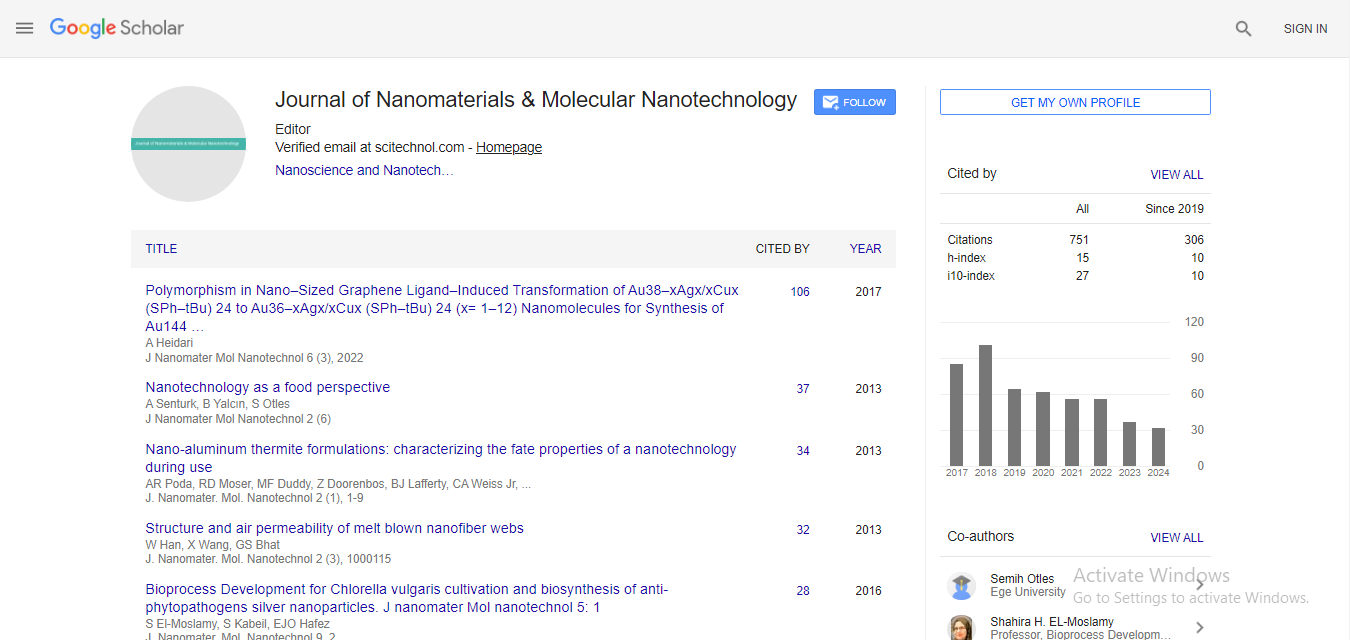Fabrication of graphene-based materials using microwave-exited atmospheric pressure plasma
Mineo Hiramatsu
Meijo University, Japan
: J Nanomater Mol Nanotechnol
Abstract
Graphene-based materials such as carbon nanotube (CNT) and graphene itself have attracted much attention due to their emerging applications. Graphenebased materials can be synthesized by several plasma enhanced chemical vapor deposition (PECVD) techniques on heated substrates. For example, plane graphene can be formed by low-pressure PECVD on Cu and Ni in the remote plasma configuration. However, excess flux of carbon precursors causes supersaturation and ion bombardment induces the defects. Previously a microwave-excited non-epuilibrium atmospheric pressure plasma source with high electron density of ~1015 cm-3 and low electron temperature of ~1 eV was applied to the synthesis of CNTs. This type of plasma has a great potential for realizing the new material processing because the larger amount of radicals is estimated by a few orders of magnitude compared with the conventional low-pressure and high-density plasmas. Furthermore, the effect of ion bombardment on the growing surface can be removed due to the high-pressure operation. Here, microwave-excited atmospheric pressure plasma employing He/H2/CH4 mixture was applied to the synthesis of graphene-based materials. A schematic of atmospheric pressure PECVD system is shown in Fig. 1. The microwave (2.45 GHz) propagates from the top of the deposition chamber to the micro-slit electrode. The micro-slit electrode width is 0.2 mm. Formation of plane graphene was carried out on Cu substrate for 10- 300 sec at microwave power of 100 W, total pressure of 1 atm and substrate temperature of about 700 ˚C. In spite of the localized plasma shape, graphene was formed uniformly on the whole substrate. Moreover, the number of graphene layers did not increase even in the increase of formation period. Results indicated that the self-limiting growth of few-layer graphene could be attained on the Cu substrate by the supply of long-lived hydrocarbon radicals without ion bombardment using atmospheric pressure plasma.
Biography
Mineo Hiramatsu is a Full Professor of Department of Electrical and Electronic Engineering and the Director of Research Institute, Meijo University, Japan. His main fields of research are plasma diagnostics and plasma processing for the synthesis of thin films and nanostructured materials. He served as chairman and member of organizing and scientific committees of international conferences on plasma chemistry and plasma processing. He was awarded the Japan Society of Applied Physics Fellow in 2017.
E-mail: mnhrmt@meijo-u.ac.jp
 Spanish
Spanish  Chinese
Chinese  Russian
Russian  German
German  French
French  Japanese
Japanese  Portuguese
Portuguese  Hindi
Hindi 



